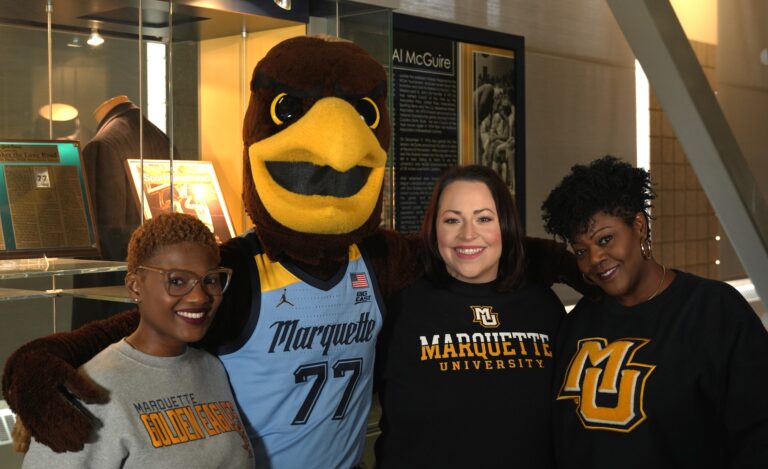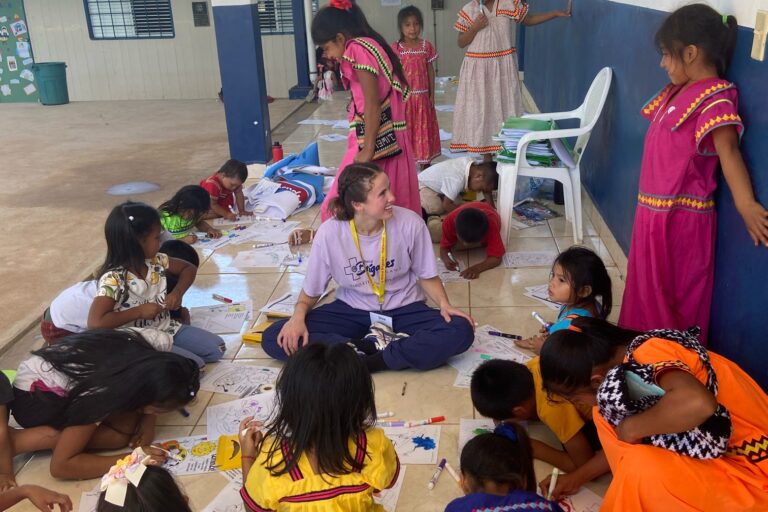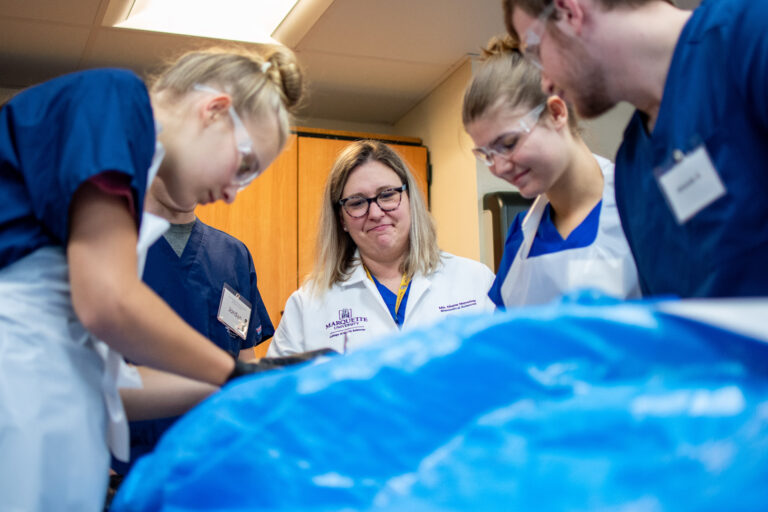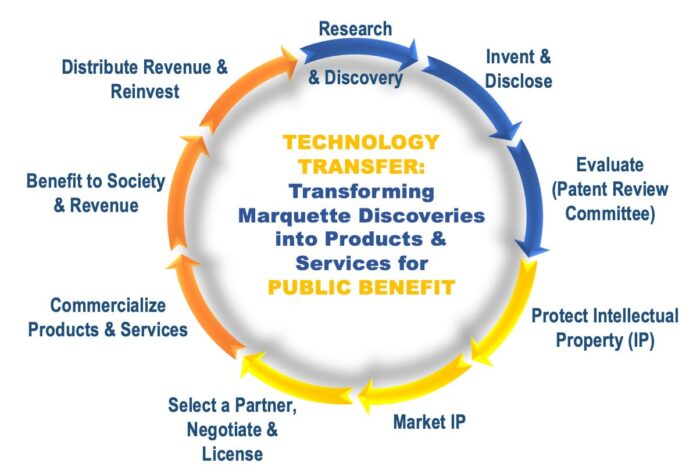
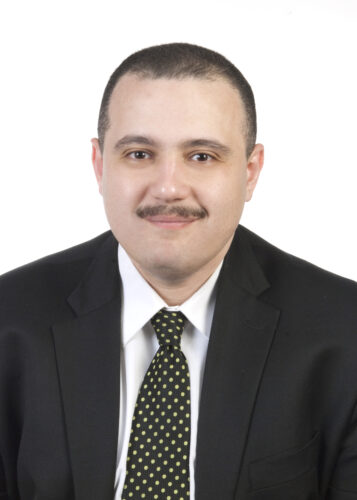
It’s remarkable what Dr. Aymen EL-Refaie, electrical and computer engineering professor in the Opus College of Engineering, has accomplished in nearly 22 years of research in industry and at Marquette. EL-Refaie was recently presented with the Lawrence G. Haggerty Faculty Award for Excellence in Research.
He holds more than 48 patents and has conducted groundbreaking work in advanced traction motors, fault-tolerant electrical machines for safety-critical applications and high specific-power electrical machines, among others.
EL-Refaie’s research on electric vehicles, hybrid/electric airplanes and renewable energy stands to influence the future of engineering innovation at Marquette and in Wisconsin and create immense economic and environmental value globally. EL-Refaie has disclosed his many inventions to technology transfer team in the Office of University Relations.
“I filed several patent applications with our technology transfer partners, and there are few that are still in the pipeline,” EL-Refaie says. “I always have an excellent experience, and everyone is efficient and professional.”
Patenting inventions is only a part of the technology transfer process, which is managed by the Office of University Relations. To turn ideas into action, OUR nurtures and cultivates collaborative, holistic, mutually beneficial and sustainable partnerships with companies.
What is technology transfer?
Technology transfer helps transform Marquette discoveries into products and services for public benefit.
Dr. Kalpa Vithalani, executive director of technology transfer, directs the intellectual property life cycle for Marquette discoveries — evaluating inventions with the Patent Review Committee, protecting IP (i.e., patents, copyrights, know-how, trade secrets) and negotiating win-win agreements to bring research to life. She also educates Marquette researchers on the fundamentals of IP, mentors entrepreneurial faculty, staff and students, and helps them navigate the complex commercialization journey.
“I am passionate about helping connect ideas and inventors from Marquette with an ecosystem of corporate, entrepreneurial, legal and investment resources to build partnerships needed to create value for public benefit through technology transfer and corporate engagement,” Vithalani says. “Our inventors transform IP into assets to be developed either by existing businesses or by forming their own startup companies.”
Marquette has its own Intellectual Property Policy that defines the rights and responsibilities of the university with respect to the ownership and administration of intellectual property.
While patent protection is possible in the U.S. for up to one year following a public disclosure, international patent rights are lost upon public disclosure.
With the help of technology transfer, Dr. Douglas Woods, vice provost for graduate and professional programs and dean of the Graduate School, developed a treatment approach with colleagues across the U.S., to teach patients and their family’s therapeutic skills to manage tics.
Tichelper is the first and only technology-based, online, self-guided therapy program for families of children with Chronic Tic Disorder and Tourette Disorder based upon Comprehensive Behavioral Intervention. The code underlying the program is copyrighted.
Woods, a professor of psychology, says the technology transfer team was helpful and the process was relatively seamless.
“I completed an invention disclosure form, had some conversations with the office and they negotiated the rest of the agreements,” Woods says, adding that protecting the IP for Tichelper will ultimately impact children with Tourette’s Syndrome. The office executed a joint ownership agreement with the coinventors and an IP license agreement with startup company Tichelper, enabling it to deploy the treatment.
“I think this is a good example of how research, innovation and business partnerships can work together to create more accessible care options for children with neuropsychiatric conditions,” Woods says. “It’s a good example of how Marquette University can make a difference in the community.”
Patent potential
Patents protect IP developed by inventors and allow them to explore the potential of turning their discoveries into products — a process is sometimes overlooked.
“Typically, a team brainstorms to propose new ideas hoping to solve difficult problems,” EL-Refaie says. “The patenting process from start to finish can take between three to five years, depending on the office.”
Enacted in 1980, the Bayh-Dole Act enables universities, nonprofit research institutions and small businesses to own, patent and commercialize inventions developed under federally funded research programs. This effectively places the responsibility for commercialization in the hands of the institution, largely through technology transfer functions.
Ultimately, patents incentivize companies to invest the resources required to develop products and services.
“The goal of developing new technologies is to try and commercialize them,” says EL-Refaie. “By protecting the technology and securing the IP, this can potentially lead to licensing the technology to commercial entities and ultimately, helping society.”
Related content:
